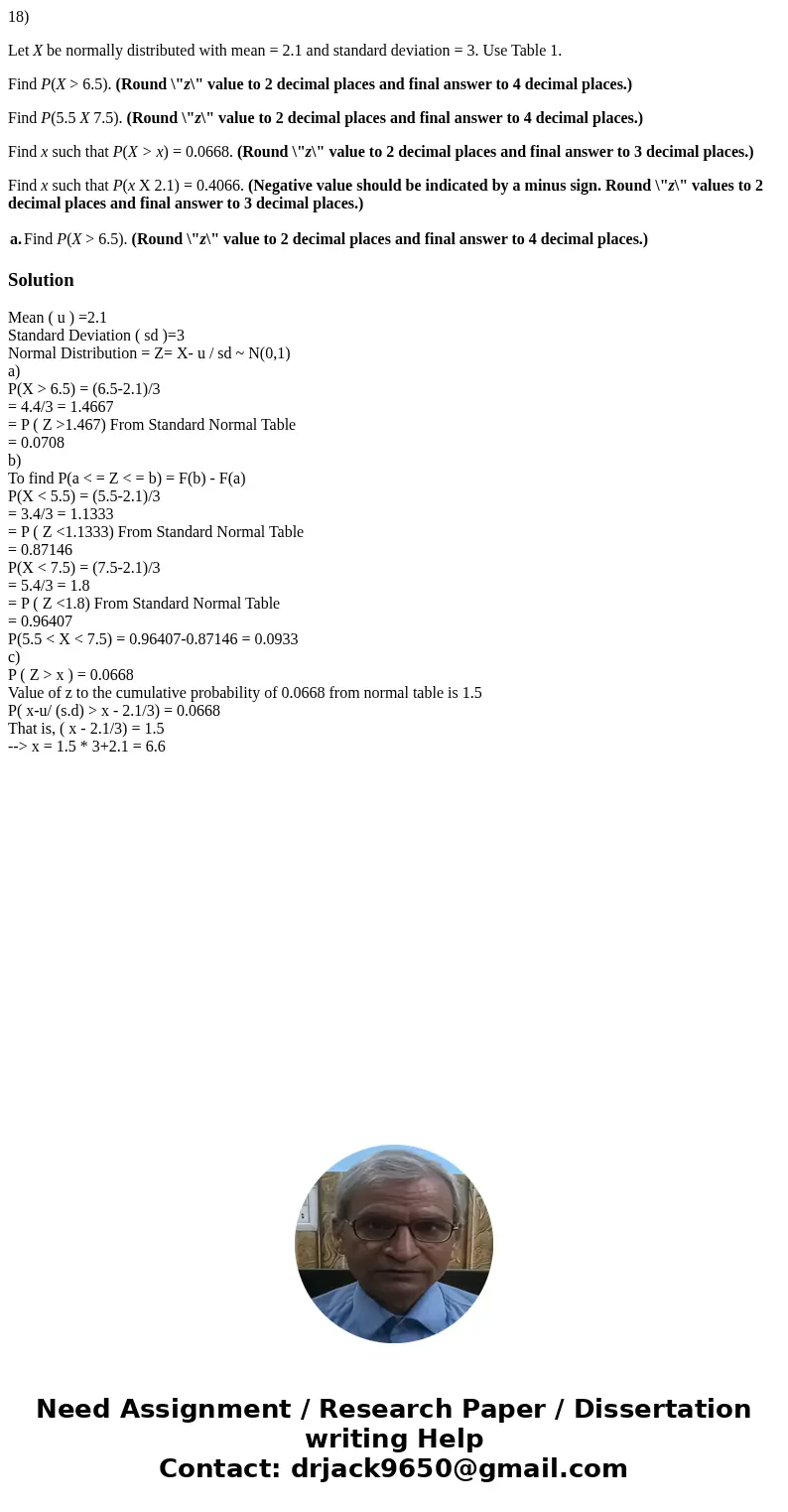18 Let X be normally distributed with mean 21 and standard
18)
Let X be normally distributed with mean = 2.1 and standard deviation = 3. Use Table 1.
Find P(X > 6.5). (Round \"z\" value to 2 decimal places and final answer to 4 decimal places.)
Find P(5.5 X 7.5). (Round \"z\" value to 2 decimal places and final answer to 4 decimal places.)
Find x such that P(X > x) = 0.0668. (Round \"z\" value to 2 decimal places and final answer to 3 decimal places.)
Find x such that P(x X 2.1) = 0.4066. (Negative value should be indicated by a minus sign. Round \"z\" values to 2 decimal places and final answer to 3 decimal places.)
| a. | Find P(X > 6.5). (Round \"z\" value to 2 decimal places and final answer to 4 decimal places.) |
Solution
Mean ( u ) =2.1
Standard Deviation ( sd )=3
Normal Distribution = Z= X- u / sd ~ N(0,1)
a)
P(X > 6.5) = (6.5-2.1)/3
= 4.4/3 = 1.4667
= P ( Z >1.467) From Standard Normal Table
= 0.0708
b)
To find P(a < = Z < = b) = F(b) - F(a)
P(X < 5.5) = (5.5-2.1)/3
= 3.4/3 = 1.1333
= P ( Z <1.1333) From Standard Normal Table
= 0.87146
P(X < 7.5) = (7.5-2.1)/3
= 5.4/3 = 1.8
= P ( Z <1.8) From Standard Normal Table
= 0.96407
P(5.5 < X < 7.5) = 0.96407-0.87146 = 0.0933
c)
P ( Z > x ) = 0.0668
Value of z to the cumulative probability of 0.0668 from normal table is 1.5
P( x-u/ (s.d) > x - 2.1/3) = 0.0668
That is, ( x - 2.1/3) = 1.5
--> x = 1.5 * 3+2.1 = 6.6

 Homework Sourse
Homework Sourse